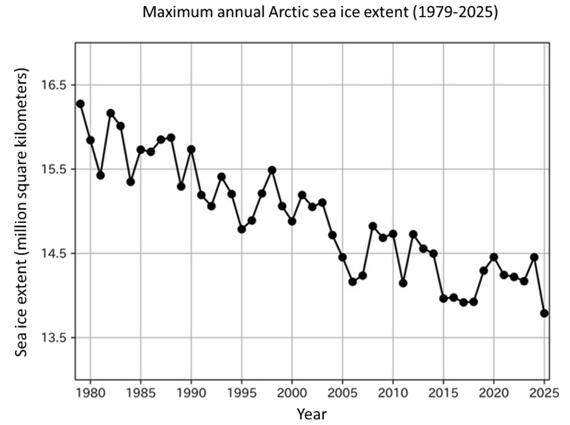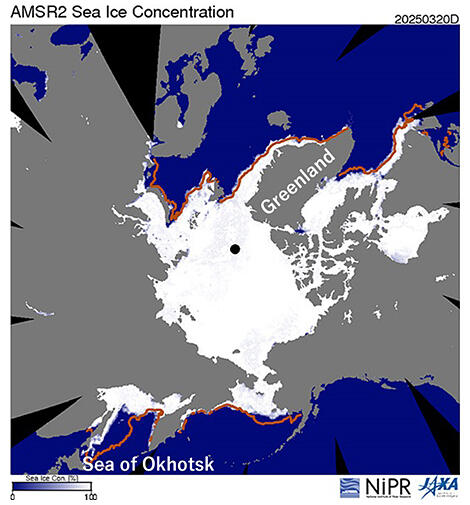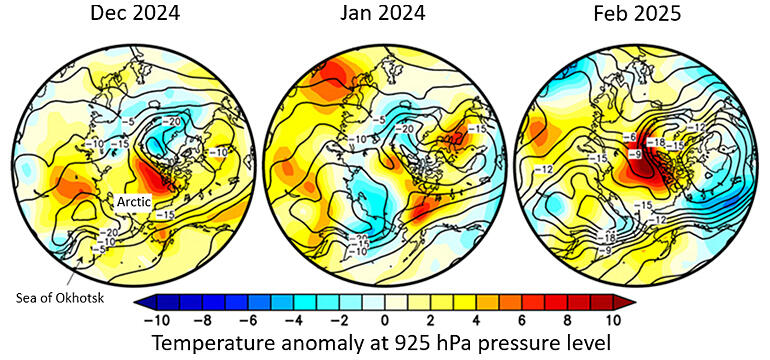The National Institute of Polar Research (NIPR) and the Japan Aerospace Exploration Agency (JAXA) announced on the 18th that the annual maximum extent of sea ice observed in the Arctic during winter has reached 13.79 million square kilometers, the smallest in satellite observation history. Higher-than-normal temperatures around the Arctic Ocean are believed to be the cause, raising concerns about future impacts on weather and marine environments.
NIPR and JAXA are currently observing the Arctic sea ice extent using microwave radiometer observation data from satellites including the Global Change Observation Mission - Water "SHIZUKU" (GCOM-W) as part of the "Arctic Challenge for Sustainability II (ArCS II)" project. Sea ice extent follows a seasonal pattern, expanding from October to March of the following year and shrinking from April to September.
According to NIPR and others, the 13.79 million square kilometers observed on March 20 is 130,000 square kilometers less than the previous record low of 13.92 million square kilometers recorded on March 5, 2017, making it the smallest in satellite observation history since monitoring began in 1979. The monthly average sea ice extent from December last year to February this year was also the smallest on record for each month.

Provided by NIPR/JAXA
When the sea ice edge on March 20 was compared with the 2010s average, the sea ice extent was smaller in many regions except east of Greenland. In particular, the Sea of Okhotsk, which is near the southern limit of sea ice distribution, had the second-lowest average sea ice extent in February this year.

Provided by NIPR/JAXA
Regarding these observations, NIPR and JAXA believe that one factor leading to the record decrease in winter sea ice extent was the continuation of higher-than-normal temperatures around the Arctic Ocean from December last year to February this year, creating conditions that made it difficult for sea ice to expand.

Provided by NIPR/JAXA
While Antarctica is shaped by a massive ice sheet, the North Pole sits on thin, changeable sea ice. According to several research datasets, the Arctic is warming more than three times faster than the global average. The Intergovernmental Panel on Climate Change (IPCC) predicts that in the worst-case scenario without greenhouse gas reduction measures, Arctic sea ice could disappear by 2050.
Many meteorological experts also point out that "extreme weather events" frequently occurring in the Northern Hemisphere in recent years, such as heat waves, heavy rainfall, and droughts, are significantly influenced by the meandering of the westerlies caused by Arctic warming.

Provided by the National Institute of Polar Research
Original article was provided by the Science Portal and has been translated by Science Japan.




